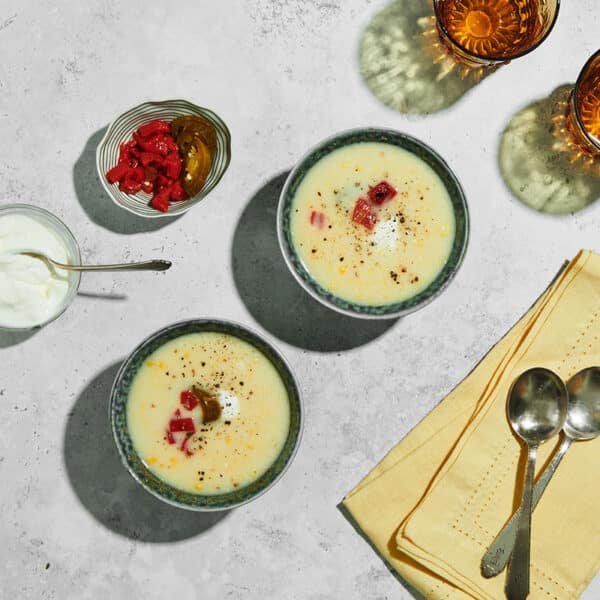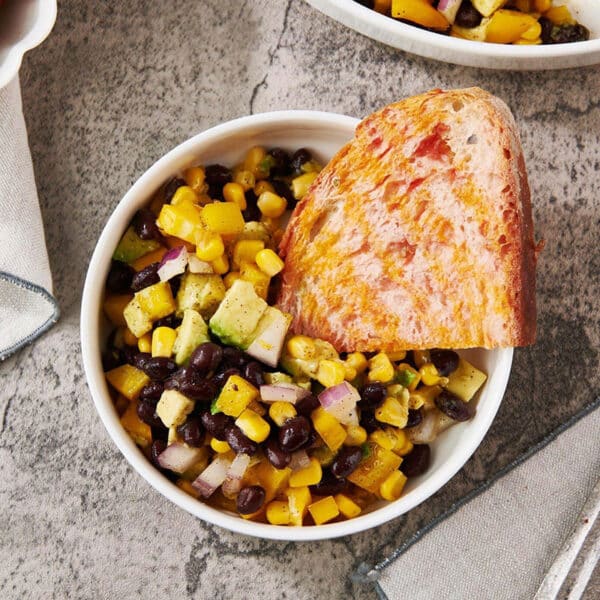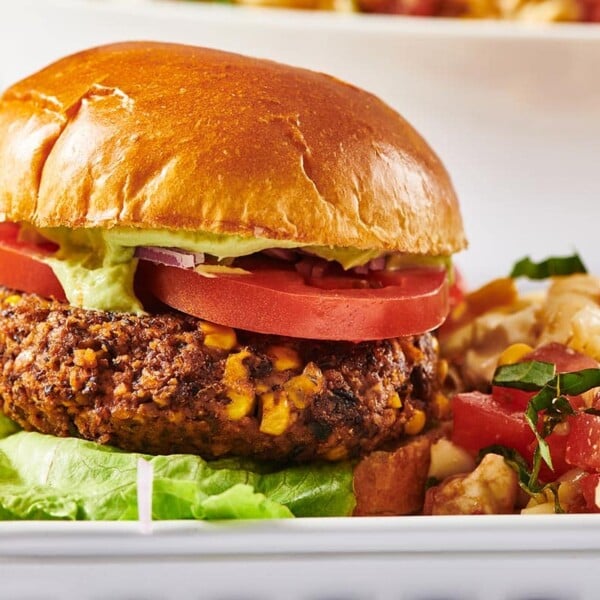How to Make Perfect Polenta on the Stove
on Aug 30, 2021, Updated Mar 30, 2025
This post may contain affiliate links. Please read our disclosure policy.
Creamy, foolproof polenta every time.
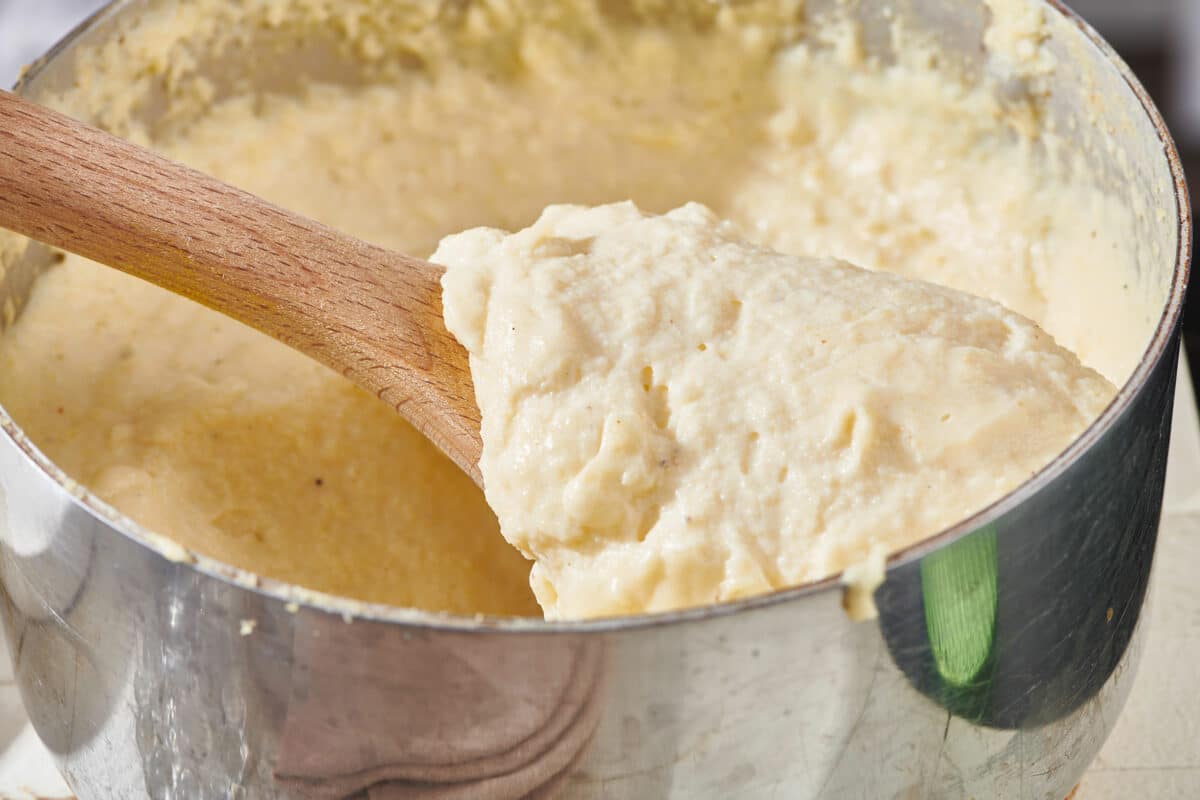
Polenta is one of those easy-to-cook grains that needs a bigger moment in the sun (at least in the U.S. — it’s been appreciated in other cultures, especially Italy, for a long while!) Those who cook a lot of polenta at home love its flavor, its versatility, and its ability to sop up every drop of whatever delicious sauce you are serving. Those who may have only had polenta in restaurants may have been wondering how easy it is to cook at home. The answer: very.
What's In This Post?
- What Is Polenta?
- Can I Substitute Cornmeal for Polenta?
- Different Kinds of Polenta
- What Can Be Added to Polenta?
- What Is the Ratio of Water to Polenta?
- How to Make Perfect Polenta on the Stove
- Leftovers
- How to Serve Polenta
- Polenta for Breakfast
- What to Serve With Polenta
- How to Make Perfect Polenta on the Stove Recipe
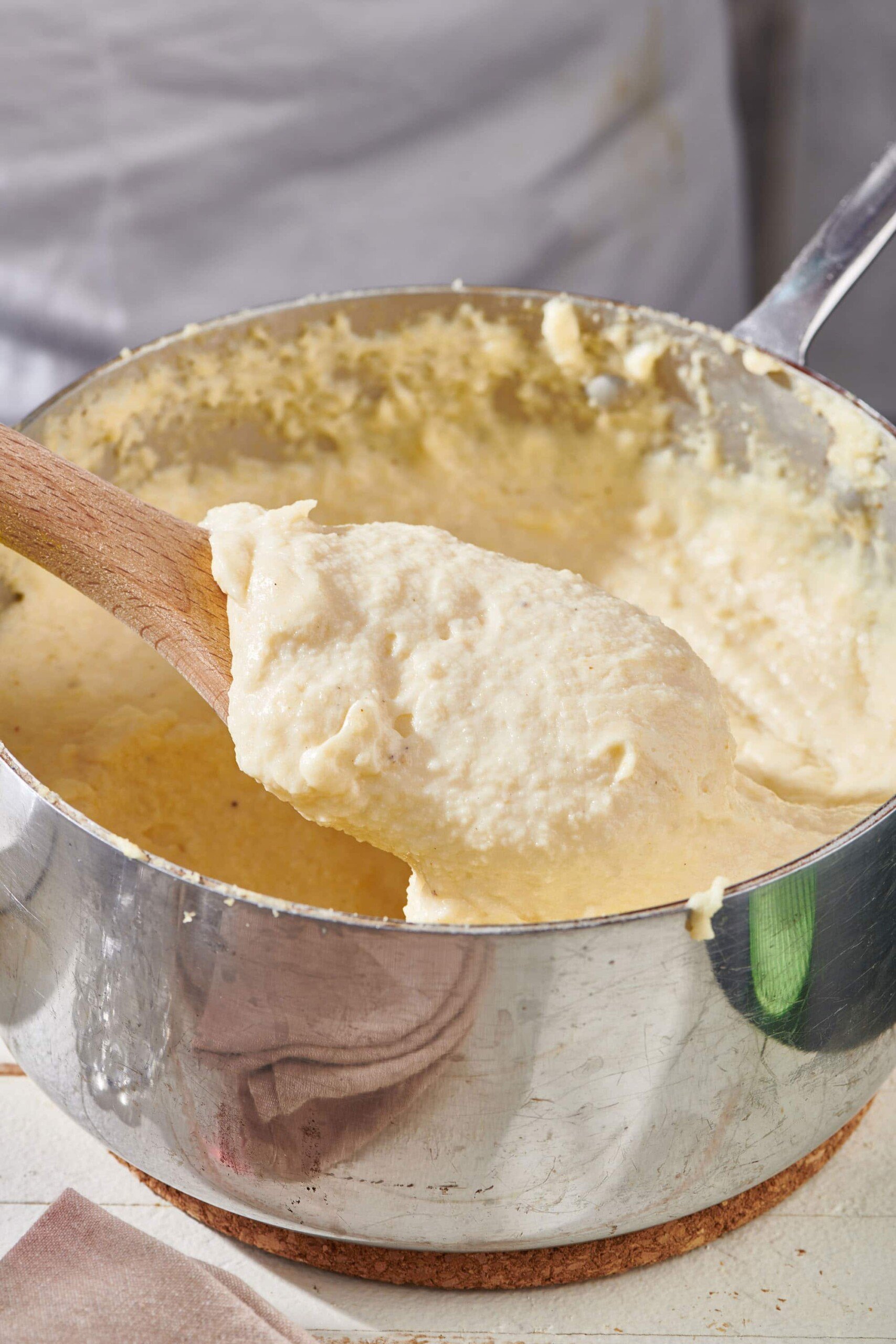
What Is Polenta?
Polenta is basically cornmeal mush or porridge, grains of cornmeal cooked in boiling water or another liquid. It is the cousin of Southern U.S. grits. It has culinary roots in Northern Italy, where it is a mainstay starch.
By signing up, you agree to our Privacy Policy.
You can control the thickness of the polenta with the amount of liquid you add. To get softer, thinner polenta, add more liquid, for firmer, thicker polenta, use less liquid.
Can I Substitute Cornmeal for Polenta?
Yes! Sometimes polenta is a bit more coarsely ground than cornmeal, but the texture is all that’s different. Polenta tends to be yellow, whereas cornmeal might be yellow or white. The color won’t affect the taste. The coarseness of the grind will influence the final texture of the polenta, but that’s the main difference. Cornmeal can be used in place of polenta.
Different Kinds of Polenta
Polenta can be made from different types of cornmeal. First there is the coarse ness of the grain: coarse, medium, or fine — they all work, they will just affect the consistency of the finished polenta in terms of how smooth it is.

Then there are different types of polenta in terms of speed of cooking. There is instant or fast-cooking polenta and regular slow-cooking polenta, which will result in the creamiest, most rounded texture and flavor. Instant polenta has been pre-processed, and purists feel like it doesn’t have the same flavor and consistency as slow-cooked cornmeal.
Regular cornmeal (again, the coarseness of the grain is up to you) takes up to 40 minutes to cook into polenta, with regular stirring. It’s worth it however, because as the grains swell and absorb the liquid, the consistency becomes creamier.
What Can Be Added to Polenta?
If you are familiar with grits, usually served in the South, you can think of polenta in the same way. Butter and cheese (often Parmesan) might be stirred in, and the liquid can be plain water or a blend of water, broth, and milk or other dairy. All kinds of seasonings, such as fresh herbs or red pepper flakes, can also be added.

What Is the Ratio of Water to Polenta?
For classic soft polenta, the liquid-to-grain ratio is usually about 4:1.
How to Make Perfect Polenta on the Stove
- In a heavy Dutch oven or large (4-quart) saucepan, bring the broth or water and milk to a simmer over medium-high heat. I like to use a mixture of broth and water.

- And milk.

- Reduce the heat, sprinkle in the polenta, whisking all the while, and keep adjusting the heat so that the mixture stays at a gentle simmer.

- Season with salt and pepper. Continue to simmer and whisk frequently until the mixture has thickened and become creamy, about 30 to 40 minutes.

- Remove the pot from the heat and whisk in the Parmesan (if using) and the butter.

- Taste and add pepper and additional salt, if needed. Serve the polenta hot in shallow bowls with whatever toppings you might like.
Leftovers
You can reheat leftover polenta in a pot over very low heat, or better still, use a double boiler to prevent burning on the bottom. You can make a homemade double boiler if you don’t have one.
How to Serve Polenta
It then can be served as is, soft and thick-soupy, or it can be cooled in a pan or rimmed baking sheet, then sliced and fried, grilled, baked, or broiled.
Soft polenta is usually served alongside or underneath a main dish and absorbs sauces beautifully. When polenta is served as the base of a dish, it’s often topped with something quite saucy, like a thick ragu, Peporanata, or maybe sauteed mushrooms with a pan sauce. Meat, seafood, vegetables, all can be served on either soft polenta, or cooked sliced firm polenta.
Polenta is a great base for a vegetarian meal — you can even mix and match different cuisines — I think an Indian curry would be perfect atop polenta.

Polenta for Breakfast
While polenta is usually cooked and served in savory preparations, it is also often served for breakfast, with some sort of sweetener added, like brown sugar. Again: think grits.
What to Serve With Polenta
Other Recipes With Polenta
- Salmon with Polenta and Warm Tomato Vinaigrette
- Fried Eggs and Smoked Salmon over Polenta Cakes
- Polenta with Sautéed Mushrooms

How to Cook Other Grains:
Pin this now to find it later
Pin It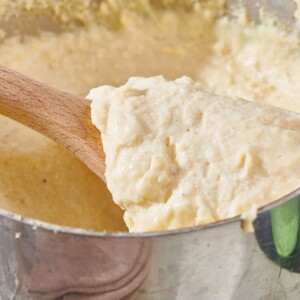
How to Make Perfect Polenta on the Stove
Ingredients
- 1 ½ cups chicken broth or water
- 2 ½ cups whole milk
- 1 cup fine, medium, or coarse grain cornmeal or polenta
- Kosher salt and freshly ground black pepper (to taste)
- ¼ cup grated Parmesan cheese (optional)
- 2 tablespoons unsalted butter
Instructions
- In a heavy Dutch oven or large (4-quart) saucepan, bring the broth or water and milk to a simmer over medium-high heat.
- Reduce the heat, sprinkle in the polenta, whisking all the while, and keep adjusting the heat so that the mixture stays at a gentle simmer. Season with salt and pepper. Continue to simmer and whisk frequently until the mixture has thickened and become creamy, about 30 to 40 minutes.
- Remove the pot from the heat and whisk in the Parmesan (if using) and the butter. Taste and add pepper and additional salt, if needed. Serve the polenta hot in shallow bowls with whatever toppings you might like.
